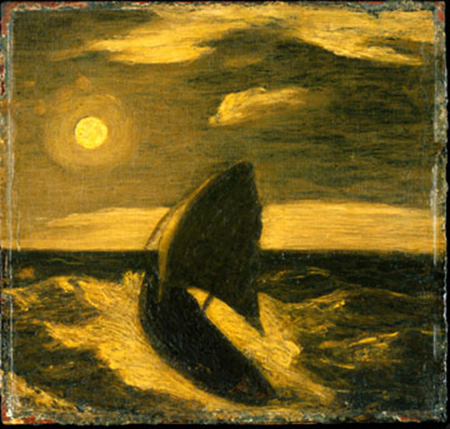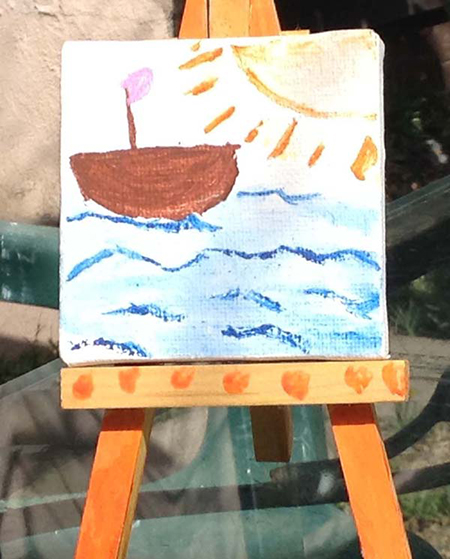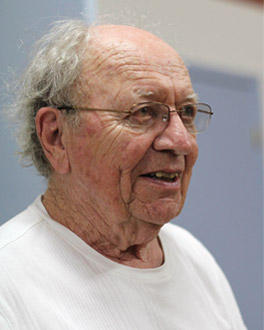Albert Pinkham Ryder (1847-1917) was considered by the organizers of the 1913 Armory Show as our one truly modern American painter. That show, which brought the new art from Europe to America for the first time, introduced a shocked public to the core of the new ideas from Paris. Ryder was the only American placed in the central gallery with Picasso, Matisse, and Leger et al.

His late works like this one were usually small, mostly monochrome and thickly painted to the point of technical fragility. Many of them were of a marine nature using a subject that bordered on a kind of cliché (See the little Mexico souvenir canvas, e.g.), which is to say that in art, the line between a cliché and an archetype is hair thin, depending upon a refinement of compositional delicacy to hold the line.

Ryder worked on a painting for weeks, trying to bring the image to an exquisite simplicity of form and idea. I think he was seeking a metaphor to evoke the journey of a single human life launched into the immensity of the great new wilderness of America (both real and poetically) that confronted the thousands of inexperienced European immigrants pouring into this country.
Some years later Edward Hopper’s paintings also reflected the existential loneliness that was the other side of all this newness, but from the industrial desolation of urban life and work, rather than Ryder’s more poetic attempt to get at the soul of it.




2 Responses to Albert Pinkham Ryder, modern American painter